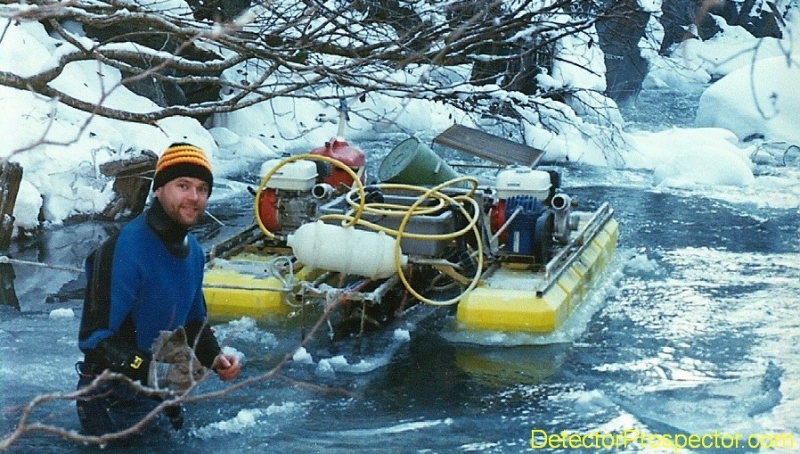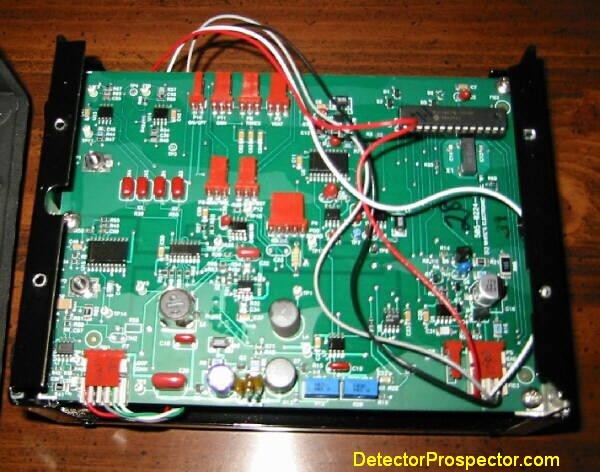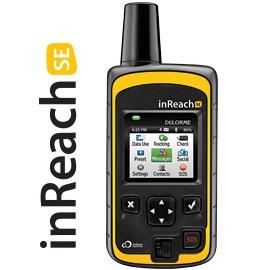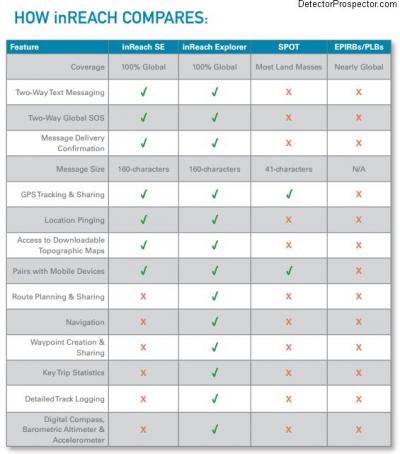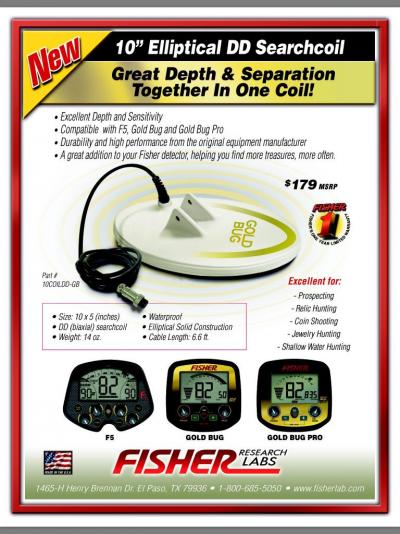-
Posts
19,765 -
Joined
Content Type
Forums
Detector Prospector Home
Detector Database
Downloads
Everything posted by Steve Herschbach
-
I was really heavy into very late fall and very early spring dredging in the late 90's time frame. This photo is from 1996 and was taken by my friend Rich Lampright. I worked a lot at Crow Creek Mine, which is glacial fed. It runs very high and fast in the summer when the glacier is melting. The best time to dredge is in the winter months when freezing temps bring the water levels down by over 50% and the water starts running crystal clear. It also made for some very cold dredging at times, but properly outfitted with a good drysuit you can stay surprisingly comfortable. Usually. Funny how some days I really was cozy and others it was just plain cold. I could operate well down to about 15 degrees. Below that, and the water literally froze in the sluice box while it was running. I resorted to subsurface dredges for the coldest spells as the box being underwater did not freeze up. But even then you see weird stuff. Ice crystals floating in the water build like snow drifts of slush behind rocks on the bottom, and giant balls of slush form on the pump intakes, eventually plugging them. Why suffer this you ask? I was seeing multi-ounce days working by myself. I took a lot of gold out of Crow Creek; even after paying a percentage to the owners it was good. In fact the best dredging I ever did. My best day in there working a 6" by myself was over 8 ounces of gold. This was my favorite dredge, my old Keene 6" with twin Honda 6HP pumps. This model was made with a molded marlex powerjet in two pieces - the jet and the flare. The jet and flare assembled was about six feet long but I could just toss it over my shoulder and carry it in one piece it was so light. The dredge had a stout frame with a lever handle leveling system, far superior to the later slide the box back and forth nonsense. The box was a well built single run sluice that I preferred over later double-decker designs. I never should have sold it. I did however, to Brian Berkhahn, and he also got a lot of gold with it. And I know he now also regrets selling it. It was the best Keene dredge I ever owned. Mark Keene told me they stopped making the marlex jets due to a high failure rate with the process but they should have either fixed the process or just charged more to make up for the failures. It was an incredible advance in the technology, and amazingly after all the years of use the inside of that jet never showed more than light scuffing. I think it was actually more durable than steel jets. This photo is first thing in the morning, breaking away all the ice that has formed around the dredge overnight.
-
My first gold dredge! After seeing a guy running a suction dredge at Crow Creek Mine south of Anchorage, Alaska I ordered my first dredge in early 1973. I had never seen a dredge before, and this guy was wearing a wetsuit running a 4" dredge about chest deep in the water. He saw my interest and shut the dredge down, pointed at the first riffle, and there was more chunky gold than I had ever found. I was hooked! I got the dredge direct from Keene, only way I could get one back then. Knowing nothing about dredges I saw no reason why I should spend extra money to get floats. I figured 2.5" was too small and 4" too big so a 3" must be just right. I learned a lot with that dredge. The first thing I learned is when you put it on bank with powerjet way above water it is nearly impossible to prime. And that when you finally get it primed, the entire hose will fill with gravel, then everything stops. Once I took the 15 feet of hose off to shake all the gravel out, and did this maybe three times in a row, I realized the dredge cannot be operated more than a couple feet above water. In fact, keep the place where hose and jet meet at or below water level for best results. Which made finding a place to use it quite a challenge. You need something like in this photo - a nice rock or pile of rocks or sawhorses next to water. This basically eliminated almost all the places I wanted to use the dredge, so this photo was the last time I ever dredged without floats, way back in 1973. You pretty much have to have them as a suction dredge that does not float is very limited. I did not find a lot of gold here but found my biggest nugget to that date. I think it was only like a pennyweight but it seemed huge at the time. Photo taken in Wrangell Mountains, Alaska on Skookum Gulch.
-

DeLorme InReach Satellite Text Communicator
Steve Herschbach replied to Steve Herschbach's topic in Detector Prospector Forum
SPOT is owned by Globalstar and operates on their satellite network. It is a very popular and inexpensive device. I believe they are one way communications only - you can only send messages but not receive. inReach is on the Iridium network, which has better coverage, but the main thing is the Delorme device offers two way texting. I found a good review/comparison here http://www.wildsnow.com/8245/spot-inreach-satphone-review-delorme/ For what it is worth I had zero luck with the Globalstar network in Alaska. I tried one of their phones and never got a signal at Moore Creek, so went with Iridium and have never regretted it. I hear Globalstar is rebuilding their network though so maybe it is better now. -
So true Chris, and again why I hope I am getting the point across here that when making choices like this it is all about personal preferences. If I really was looking at the same group and coin hunting was top of my mind the MXT would be a prime contender. However, the Gold Bug Pro with 5" coil will pull coins out of trash that deeper detecting units will miss. It has an extremely fast recovery time and that little coil is tight as can be. I think the Gold Bug Pro has gotten a bit of a bum rap for coin detecting. For coin detecting in extreme trash it actually shines, like around old cabin sites. The key is its ability to put an extreme fine tune on the ferrous/non-ferrous break point. http://www.dankowskidetectors.com/discussions/read.php?2,52741 The AT Gold with its 5" x 8" DD coil is another machine that people say does not get great depth on coins, but again excels in thick ferrous trash. These are all really great detectors if you get to know their fine points and use them for what they do best. I have generally ignored the Tesoro Diablo uMax simply because it was only made a short while. It was Dave Johnson's favorite design, and I have tried to drop heavy hints to Tesoro that it should be reintroduced with the addition of a simple ferrous disc circuit. It was all metal only. But even just reintroducing the original model would be a good idea as it was a super light great detector at a very low price. I do not see how it could not sell for them, but maybe they are worried about undermining Lobo sales. Even the original got short shrift from marketing and so was quickly pulled from the market. I to this day am intrigued by the dual ground balance points which I think would be a great addition on any VLF detector. You had the normal ground balance on the detector, and a secondary ability to ground balance out a given hot rock. Basically a hot rock notch circuit. Really cool idea I would like to see revived.
- 33 replies
-
- whites mxt
- fisher gold bug
-
(and 1 more)
Tagged with:
-

Garrett Infinium Coils On Garrett Atx
Steve Herschbach replied to Steve Herschbach's topic in Garrett Metal Detectors
No, I do not have one to try. I was looking for something lighter in weight with no openings so the 10 x 14 DD did not really seem to offer enough difference compared to the coil already on the ATX to make me spring for one. Though of course it would still have the advantage of being able to be hip mounted. -
It would be interesting to see a GMT circuit board and SGT board side by side. Did they just take a GMT board and not hook up everything? Or did a separate stripped down board get made? Check this out in case you ever get a look inside. White's GMT Rebuild. Not the clearest pictures but maybe enough to see differences. The GMT board was very well marked with what hooked where. Add a single switch to toggle ground tracking and have unit always run with the iron grunt feature engaged, that would be a great little unit! White's GMT Circuit Board
-
Hi Mike, So you ended up keeping it? I have a GMT which is a great detector. It is too bad the SGT does not have a simple flip switch to go to a Locked mode. Like you say you can work around it but I prefer for the tracking to be shut off. It is very annoying on the tiniest gold targets which are exactly the targets I am normally looking for when I use the GMT. Still, at $499 or less the Sierra Gold Trac is a certified smoking good deal in a hot 48 kHz ground tracking detector. It is far and away the lowest priced unit that offers ground tracking with the Tesoro Lobo at $799 being the next cheapest option. Too bad it is a semi-secret White's model only available to west coast dealers. Maybe you can confirm something Mike. Jimmy's site indicates the SGT retains the GMT "Iron Grunt" feature but I believe this is a mistake on his website. The manual makes no mention of it. White's Sierra Gold Trac Owner's Manual Is the unit purely VCO all metal or is there an audio ferrous indication? White’s Sierra Gold Trac (SGT) Data & User Reviews
-

Congrats On The New Forum
Steve Herschbach replied to Rick K - First Member's topic in Detector Prospector Forum
Thanks Mike. While this will tend to be prospecting oriented I do not intend on letting it be only that. I personally look for gold wherever I can find it. I jewelry hunt parks and tot lots. I love beach detecting. I still have not checked gold coin off my bucket list. Gold can be found almost anywhere, and there is no reason to limit looking for it to any particular means. So as a top-notch jewelry hunter I know you have things to contribute here. -

Garrett Infinium Coils On Garrett Atx
Steve Herschbach replied to Steve Herschbach's topic in Garrett Metal Detectors
I have contacted Garrett again and the information available has been refined. "The ATX can be operated with Infinium DD coils. Performance with Infinium DD coils should be normal but is not guaranteed. The ATX cannot be operated with Infinium mono coils or any other Garrett coil other than ATX coils and Infinium DD coils. Recon Pro coils will not work on the ATX. The Recon Pro is not the same machine electronically, even though it looks similar. Use of any coil other than ATX coils and Infinium DD coils, including the use of 3rd party coils, will void the warranty." So there you have it. The only coils you can run on the ATX are ATX coils (obviously) and Garrett Infinium DD coils. There are three Infinium DD coils available, 10" x 14" DD PN: 2217100, 5" x 10" DD PN: 2216700, and 3" x 7" DD PN: 2216600. -
Hi Rob, Great to see you here - thanks for joining! As my review at http://www.detectorprospector.com/steves-mining-journal/gold-nugget-detecting-with-garrett-atx.htm the stock ATX coil does false when knocked or rolled on rocks, but not consistently. Enough though I tried to avoid hitting stuff with it. It never falsed once hitting bushes or stubble that I recall, but of course this was dry desert stuff. I do not think soft knocks will do it. My theory is it is sharper knocks causing cable motion. The coil is epoxy filled so should be impervious to falsing so I do not see what it could be but something farther up the line. The ATX probably is a very good detector for New Zealand. There sure is a lot of the place that reminds me of Alaska.
- 1 reply
-
- new zealand
- garrett atx
-
(and 1 more)
Tagged with:
-

Congrats On The New Forum
Steve Herschbach replied to Rick K - First Member's topic in Detector Prospector Forum
Hi Bob, I was all over the place after the AMDS Forum folded but have not been happy since so decide to start a new home base here. Since I own this outright it will be around as long as I am, hopefully for a long time! Good to see you here, send any AMDS Forum orphans you see this way. Merry Christmas! -
I believe one of the best books available for the small scale miner and prospector is Fists Full Of Gold by Chris Ralph. 362 pages of chock full of information on gold prospecting, small scale mining, and metal detecting. It really is worth a spot on your bookshelf or better yet in front of your nose. Check it out at my new information page Chris Ralph's Fists Full Of Gold
-
Every detector I have ever used goes gutless in discriminate mode. Might as well call it castrate mode. Disc mode even with the disc set to zero still is running everything though filters that rob depth.
- 33 replies
-
- whites mxt
- fisher gold bug
-
(and 1 more)
Tagged with:
-

Garrett Infinium Coils On Whites TDI SL
Steve Herschbach replied to hawkeye's topic in White's Metal Detectors
No, I said the TDI appears to run just fine with mono coils more so than with DD coils. But you can run either. Most Minelab SD/GP coils work on the TDI but if they overload you need to increase the pulse delay to get stable performance. I did plug the 10" x 5" Commander DD into my TDI last night and it worked fine but if it was me I would stick with mono coils on the TDI I believe the Garrett ATX was designed specifically around the DD coil it comes with for good performance on small gold. In my limited use of the 8" mono coil so far it appeared to not be as quiet or smooth as the stock DD coil. Which is normally the case with PI detectors. DD coils were very popular on the Minelab units prior to the GPX series, then settings on the GPX were developed that favored mono coils. I almost never use a DD coil any more except on the ATX. The bottom line for anyone is just try them yourself if you have them. Coils do vary somewhat in manufacturing and so you just never know. I was told by Garrett that Infinium mono coils would probably not work well on the Garrett ATX but I am trying them anyway. I have to find out for myself. -

Garrett Infinium Coils On Whites TDI SL
Steve Herschbach replied to hawkeye's topic in White's Metal Detectors
Sure can, though the ATX appears to be optimized for DD coils and the TDI more for mono coils. You can run any Minelab GP series DD coil on the TDI. I have the Commander 10" x 5" DD for my GPX. I will plug it into my TDI and get back to you here on how it flies. I prefer mono coils normally but I suspect the ATX is going to run better with DD coils. -

Garrett Infinium Coils On Whites TDI SL
Steve Herschbach replied to hawkeye's topic in White's Metal Detectors
I doubt they are directly compatible. You would at a minimum need to cut the Garrett connector off and wire a TDI/Minelab connector on. The lack of aftermarket coils tells me Garrett is doing something different with their coils. Otherwise the aftermarket guys would offer Garrett versions of existing coils. So some sort if electronic balancing might also be needed. With hundreds of coils available for the TDI it is not like it is worth the effort. What is it you are hoping an Infinium coil will do for a TDI? -
Thanks to Dick Hammond for pointing this out. It is a reasonably inexpensive and effective alternative to the satellite phone. I have an Iridium phone I have used for years. It is the best insurance policy you can purchase for remote operations. But the phones are expensive, and the plans more so. Phones are around $800 now, but you can get used ones for about half that. It is the plans that add up. In Alaska we are lucky because a 6 month plan can be had for half what it costs for global minutes. Information on DeLorme InReach http://www.inreachdelorme.com/product-info/inreachse.php Cost for Iridium Sat Phone Plans http://www.satphonestore.com/airtime/iridium-airtime.html I may sell my Sat phone and get the InReach and have money left over. May be a better option for me now. Buy an InReach Communicator here.
-

Garrett Infinium Coils On Garrett Atx
Steve Herschbach replied to Steve Herschbach's topic in Garrett Metal Detectors
Minimal with DD coils, even less than stock coil, as I would expect with smaller DD coils. -

Congrats On The New Forum
Steve Herschbach replied to Rick K - First Member's topic in Detector Prospector Forum
Thank you one and all. Please let others who may be interested know about the forum. Thanks again! -
Hi, I have a Garrett ATX and have done some nugget detecting with it. See Gold Nugget Detecting with the Garrett ATX. However, the weight and the stock coil had me wishing for options. I wanted a smaller coil with no openings to hang up that could get into tighter locations. As a past Infinium owner the 10" x 5" DD coil immediately came to mind. See Detecting with the Garrett Infinium in Hawaii and the first picture will tell you what was going through my mind as I hunted gold nuggets. So I have some Garrett Infinium coils I am trying on the ATX. The full story and photos are at my new Garrett ATX Accessory page. I will be updating it as I experiment more with the concept. An obvious alternative would be to make an adapter to mate a standard lower rod assembly to the ATX (it has already been done for the Recon) but I wanted to go hip mount for the least weight on my arm possible. I want to note here I am advocating nothing and recommending nothing. This is just something I am doing that may answer some questions for some people. If nothing else it will save somebody else making a duplicate effort or wasting the time and money on something that may or may not work out. Bottom line is I just have to know for myself so I will find out and report back as I go along. This thread will be the official question and answer thread for the experiment.
-
Keith is a wealth of knowledge. Nugget detecting is not his thing but maybe I can entice him here for a post or two. "First of all he believed he could clearly hear the difference between Rusty objects and foil by the pitch of the response -these targets giving a higher pitched response than lead (and therefore presumably gold). Secondly when he put the detector in the alkali mode he found that if he passed the coil over the target several times hot rocks and iron targets would fade but more conductive target such as lead and gold would not fade." Good luck with that. All detectors have strengths and weaknesses and experienced operators do learn tricks. But stuff like VCO pitch just reflect signal intensity. You hear it said time and again the soft signals are gold and strong ones are junk. Very true much of the time. Until it is not, and then a big nugget stays in the ground. I used to use the old hot rock fade trick with my Gold Scanner Pro. It can be used with the auto-tune system or the ground balance system, which the alkali setting directly adjusts. It just relies again on conditions that work most times in some places but which are not reliable. Kind of like most gold goes hi-lo on a Minelab. Except the rare big ones which do not. Lo-hi is almost always junk, so an easy trick to get into habit of using. I think that one cost me a 25 ounce specimen! Even iron disc works well until it does not, and how often it does not would freak people out if they knew the truth. Big tip - it is all about site selection. If you do not know gold is around, be picky, use whatever tricks you want. Until you find a nugget. Once the spot has proven to contain gold, dig everything. It really is as simple as that. But same story, the Lobo is a very good detector in knowledgeable hands and will produce the goods if used correctly. Never forget the original 19 kHz Gold Bug, 17 kHz Lobo SuperTRAQ, 14 kHz MXT, and new 19 kHz Gold Bug Pro are all Dave Johnson detectors. They are more alike than different. All ice cream, just different flavors.
- 33 replies
-
- whites mxt
- fisher gold bug
-
(and 1 more)
Tagged with:
-
I just got this in the mail today: Hello, The makers of Gold Rush on the Discovery Channel are looking for gold miners. Do you think you have what it takes to operate heavy equipment, fix mechanical breakdowns and find gold! …Or do you know someone who does? Please apply if you … • have 2 years previous mining experience (preferably gold) • Or have at least 2 years employment operating heavy equipment (such as Loaders, Excavators and Dozers) • Or are a heavy equipment mechanic Please email the following information to: miners@raw.co.uk • Name • D.O.B • Phone number • Address • How many years’ employed as a Heavy Equipment Operator • How many years’ experience placer gold mining • Why you would be an asset to a gold mining crew • A recent photograph • A Resume Please help us spread the word about this opportunity by forwarding this email to anyone in the gold mining industry you think might be great for the job. Thanks, Gemma and Rebecca RAW TV, Producers of Gold Rush Third Floor, 13 – 21 Curtain Road, London EC2A 3LT UK Company Reg. 4305751 VAT: 788 4624 73
-
Hi Jack, Holding the Mode switch in the PINPOINT position on the Lobo removes the Auto Tune until the switch is released. It will indeed help keep weak targets from fading if employed immediately after acquiring said target. I am picking on the Lobo of course. As I note in the article I think a person can use any of them and be just fine. I know people who own and swear by the Lobo. I still think it would benefit greatly from having a manual ground balance option. For me personally having simultaneous all metal and disc modes on the Bug is the kicker. Like I said, each person needs to decide what is most important to them. I would not want everyone to take my article as an endorsement of the Bug per se. What is important is the thought process, and somebody else may employ needs and desires to arrive at a different outcome. If weight did not matter at all to me I might still be swinging an MXT. And if I was buying a detector as a gift for somebody not likely to really learn their machine the Lobo might be the choice. In fact I did just that. I bought my father one because it is pretty much turn on and go, and it has served him very well. The Lobo is a very forgiving machine. We used them at my pay-to-mine operation at Moore Creek for the very same reason.
- 33 replies
-
- whites mxt
- fisher gold bug
-
(and 1 more)
Tagged with:
-
Hi Steve, The F75 and T2 are excellent detectors. They run at a bit lower frequency than the Gold Bug Pro (13 kHz vs 19 kHz), hit big gold just a tiny bit deeper, and are a hair less sensitive to small gold. For the purposes of the comparison though they cost twice as much as all the detectors listed all for features not needed for nugget detecting. Still, the T2, the Teknetics variant of the F75, is one of the most popular detectors used in the gold rush overseas. And the F75 got glowing review by Jack Lange at http://www.fisherlab.com/magazine/ I of course did very well with the F75 SE as shown at http://www.fisherlab.com/Hobby/finds-Steve-Herschbach.htm and in fact am writing an article for a magazine about it. But this summer I fell in love with the Gold Bug Pro with 10" x 5" DD combo and ended up using it most if the time. It really just depends whether you want the detector to skew more towards small gold at the Gold Bug Pro higher frequency or towards bigger deep gold at the F75 lower frequency. Again though, I wanted to keep the article focused, and sticking to a similar price range makes for a better apples to apples comparison.
- 33 replies
-
- whites mxt
- fisher gold bug
-
(and 1 more)
Tagged with:
-

Congrats On The New Forum
Steve Herschbach replied to Rick K - First Member's topic in Detector Prospector Forum
Hey Jack, Yeah, sorry I saw so little of you. I will be back up next summer. You going to be around? I did not so much retire as move. Keeping plenty busy!

